University of Cardiff
Type of resources
Topics
Keywords
Contact for the resource
Provided by
Years
Formats
Representation types
Update frequencies
-
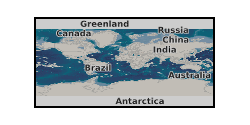
This presentation on the UKCCSRC Call 1 project, Oxyfuel and EGR Processes in GT Combustion, was presented at the Cardiff Biannual, 11.09.15. Grant number: UKCCSRC-C1-26.
-

Pulleniatina sample weights U1486. Grant abstract: This grant supports the participation of UK scientists Professor Paul Pearson in Expedition 363 of the International Ocean Discovery Program which plans to study the history of the 'Indo-Pacific Warm Pool' over the last 15 million years. It includes costs to cover his time while on board ship (2 months at sea) and post-expedition scientific study. Sea surface temperatures exceed 28oC across a huge area of the tropical western Pacific and Indian Oceans. Known as the Indo-Pacific Warm Pool (IPWP), this area is fundamental to the global atmospheric circulation and hydrologic cycle. The IPWP is intensifying with global warming, but modelling its likely future is challenging. Expedition n363 aims to study its temperature and climatic history over the past 15 million years, including through glacial to interglacial climate cycles and back to the globally warm Miocene epoch. Understanding its past history will help determine if its current temperature is near to its likely maximum or if global warming can cause much greater intensification in the future. Professor Pearson is a specialist in the study of microscopic fossils called planktonic foraminifera. He will study the evolution of the ocean plankton in the region over the study period, in relation to climatic change and sea level fluctuations which greatly affect the distribution of land masses and shallow seas and hence ocean current patterns. The foraminifera are also used to determine the age of the sediments drilled (called biostratigraphy) and providing other expedition scientists with a high quality planktonic foraminifer biostratigraphy will be one of the main features of this project. In additional there is a particular focus on an evolutionary lineage of foraminifera called Pulleniatina which has considerable untapped potential for stratigraphic work and also as a case study in the detailed speciation and extinction of a group of plankton. Study of this group will be facilitated by the large populations and varying morphology exhibited by them and because, like snails, they can be left or right handed and the pattern of coiling through time and across space is highly complex and potentially very informative.
-
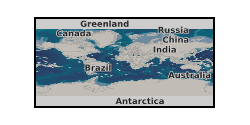
This presentation on the UKCCSRC Call 1 project, Oxyfuel and EGR Processes in GT Combustion, was presented at the GasCCS, 25.06.14. Grant number: UKCCSRC-C1-26.
-

Data are either (1) depths and spacings between stylolites and faults within Unit IV, (2) images from IODP drill core image logs of the locations of samples observed, (3) photomicrographs and flatbed thin section scans of thin sections cut from samples, (4) SEM BSE or EDS data collected at Cardiff University. These data form the basis of: Leah et al. "Brittle-ductile strain localisation and weakening in pelagic sediments seaward of the Hikurangi margin, New Zealand", Tectonics, Submitted. Images and data from samples collected at IODP Expedition 375 Site U1520 (38°58.1532'S, 179°7.9112'E, 3522.1 mbsl). This is just seaward (east) of the trench of the Hikurangi Margin, New Zealand.
-
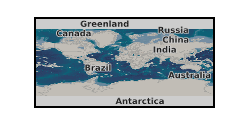
This poster on the UKCCSRC Call 1 project Oxyfuel and exhaust gas recirculation processes in gas turbine combustion for improved carbon capture performance was presented at the CSLF Call project poster reception, London, 27.06.16. Grant number: UKCCSRC-C1-26. This research is concerned with oxyfuel combustion in gas turbine applications, in particular concentrating on the use of modern swirl-stabilised burners. Oxyfuel is considered a particularly challenging idea, since the resultant burning velocity and flame temperatures will be significantly higher than what might be deemed as a practical or workable technology. For this reason it is widely accepted that EGR-derived CO2 will be used as a diluent and moderator for the reaction (in essence replacing the role of atmospheric nitrogen). The key challenges in developing oxyfuel gas turbine technology are therefore: • Flame stability at high temperatures and burning rates. • The use of CO2 as a combustion diluent. • Potential for CO emission into the capture plant. • Wide or variable operating envelopes across diluent concentrations. • Differences in the properties of N2 and CO2 giving rise to previously unmeasured flame heat release locations.
-
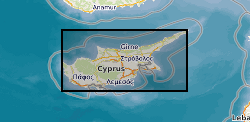
Geochemical and field data collected from samples from ore deposits hosted in the Troodos ophiolite, Cyprus by Dr Andrew Martin during his PhD. File T1 contains sample names, locations and description and file T2 contains photographs and field observations for sample localities. File T3 contains portable x-ray fluorescence (XRF) data from powdered Troodos ophiolite samples. Files T4 - T8 contain sulphide trace element data from laser-ablation inductively-coupled-plasma mass-spectrometry (LA-ICP-MS) analysis of samples from various deposits in the Troodos ophiotlite. Files T9 and T10 contain bulk sample geochemistry from aqua regia digest and ICP-MS for deposits from the Troodos ophiolite. File T11 contains results from conventional ä34S analysis of sulfide minerals from Troodos deposits and file T12 contains x-ray diffraction analysis data from silica-rich deposits in the Troodos ophiolite. Data is used in papers available at https://doi.org/10.1016/j.oregeorev.2019.01.024, https://doi.org/10.1180/mgm.2018.81 and https://doi.org/10.1016/j.chemgeo.2019.119325 and in Dr Andrew Martin's PhD thesis, available at http://orca.cf.ac.uk/124346/.
-
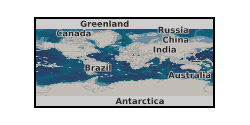
This is a blog (Update, 01.11.13) on the UKCCSRC Call 1 project, Oxyfuel and EGR Processes in GT Combustion. Grant number: UKCCSRC-C1-26.
-

Element maps from 5x 10 cm sections generated using the Zeiss Sigma HD Field Emission Gun Analytical SEM at Cardiff University. Maps come from sections within the early Miocene pelagic interval situated directly below the Nicobar Fan succession at IODP Site U1480 in the Eastern Equatorial Indian Ocean (for more information see published report, https://doi.org/10.1016/j.epsl.2017.07.019). These specific sections were chosen to examine the depositional environments associated with transitions from red clays to white chalk, which demonstrate distinct banding at the micro and macro scale.
-
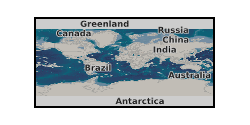
This is a blog (Final, 01.08.14) on the UKCCSRC Call 1 project, Oxyfuel and EGR Processes in GT Combustion. Grant number: UKCCSRC-C1-26.
-

Nannofossil biostratigraphy, 46x stable bulk carbonate stable isotope measurements (oxygen and carbon) and 71x % organic carbon and % carbonate measurements from between 1313.71 and 1326.82 mbsf at IODP Site U1480.
 NERC Data Catalogue Service
NERC Data Catalogue Service